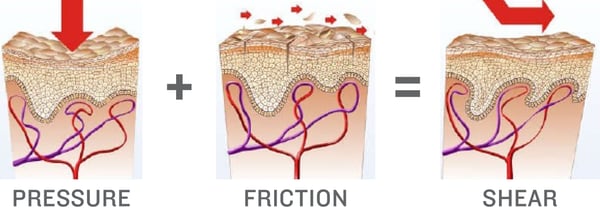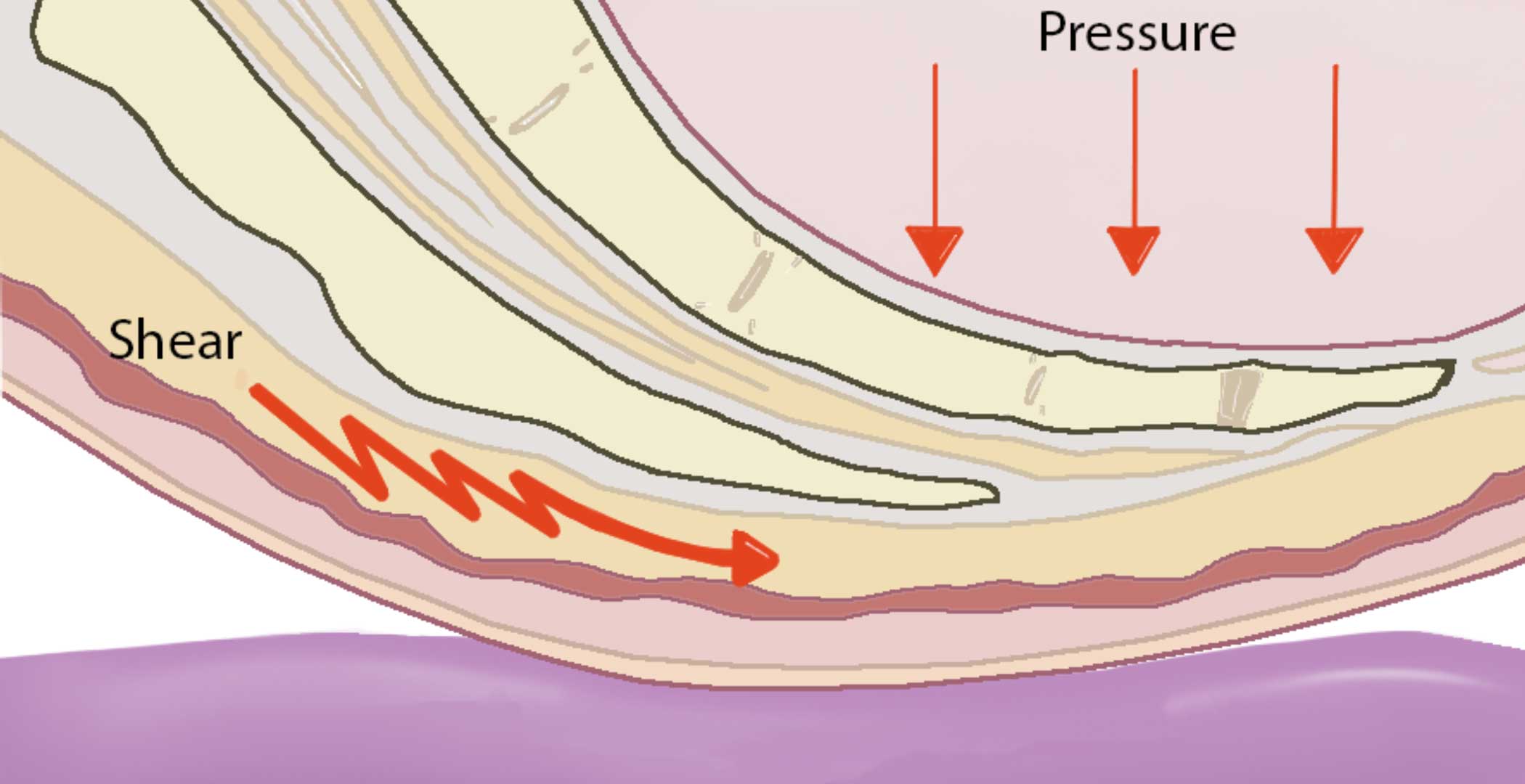Pressure injuries, also known as bedsores or pressure ulcers, are a significant concern for individuals with mobility difficulties or that spend extended periods of time in at static position. Shear forces, alongside pressure and friction, play a pivotal role in the development and progression of pressure injuries. We will discuss the importance of shear reduction as a key strategy in preventing pressure injuries and maintaining skin health.
Understanding Shear Forces
Shear forces occur when adjacent layers of tissue move in opposite directions. Picture yourself sitting in a chair and sliding downward. The friction between your skin and the chair, combined with the downward force of gravity, creates shear. In the context of pressure injury prevention, shear occurs when the skin moves in one direction while the underlying tissues move in another, stressing the tissues in between.

Importance of Shear Reduction
Let’s consider a few things…
- Tissue Integrity: Shear forces can cause deformation and damage to blood vessels and tissues beneath the skin's surface, compromising their integrity. By reducing shear, we can minimize the risk of tissue breakdown and promote better circulation.
- Pressure Redistribution: Shear reduction is closely tied to effective pressure redistribution. When shear is reduced, pressure is more evenly distributed across the skin, reducing localized stress points that could lead to pressure injuries.
- Preventing Friction: Shear and friction often go hand in hand. By addressing shear, we indirectly tackle friction, another contributing factor to pressure injuries. Smooth, low-friction surfaces and proper patient positioning are crucial in shear reduction strategies.
- Enhancing Comfort: Patients who experience less shear force often report increased comfort. This not only contributes to better patient well-being but also encourages compliance with preventive measures, such as repositioning and the use of specialized support surfaces.
Now let’s look at some shear reduction strategies…
- Positioning: Proper positioning of the body is fundamental in shear reduction. Focus should be on maintaining a neutral alignment to minimize shear forces during patient transfers and movements.
- Support Surfaces: The selection of appropriate support surfaces, such as pressure redistributing mattresses and cushions, is vital. These surfaces are designed to reduce both pressure and shear, providing additional protection against the development of pressure injuries.
- Education: Educating healthcare professionals, caregivers, and patients about the importance of shear reduction is crucial. Awareness can lead to the implementation of preventive measures and the early identification of risk factors.
Permobil and Tamarack Habilitation Technologies are the exclusive distributors of GlideWear®, a shear reduction fabric available on the Comfort M2 cushion and the Comfort Embrace cushion. GlideWear is designed to reduce the risk of pressure injuries as it reduces shear forces, provides breathability for microclimate control and improved comfort. It is available as an embedded upgrade to the STRETCH-AIR and COMFORT-TEK covers.

In the realm of pressure injury prevention, addressing shear forces is indispensable. By understanding the impact of shear on tissue integrity and combining effective shear reduction strategies with pressure redistribution and friction control, we can significantly reduce the incidence of pressure injuries.

 Nicole LaBerge, PT, ATP
Nicole LaBerge, PT, ATPCommercial Product Manager - Seating & Positioning
Nicole B. LaBerge, PT, ATP is a Physical Therapist with 18 years of experience in a variety of clinical settings. She currently works for Permobil as a Commercial Product Manager of Seating and Positioning products. Her past clinical practice has included seating and mobility for adult and pediatric populations, with a focus in neurological rehabilitation, power standing and wound care. Nicole has presented at the State and International Levels, has multiple publications in peer reviewed journals and enjoys sharing her passion for patient advocacy, efficiency, and clinical outcomes. She is an active member and previously served as an Executive Board Member for the Clinician Task Force.

